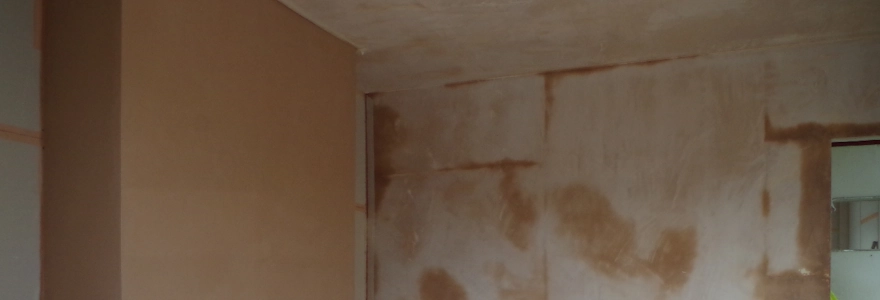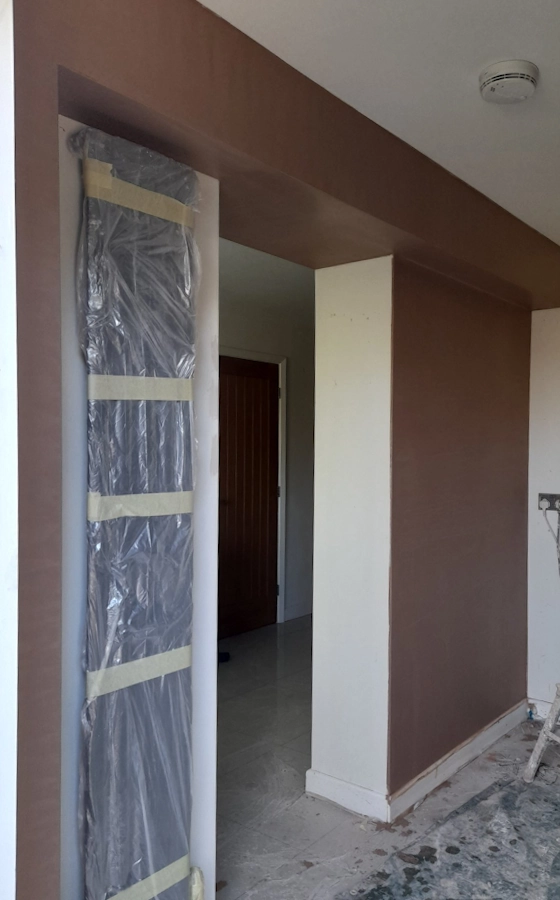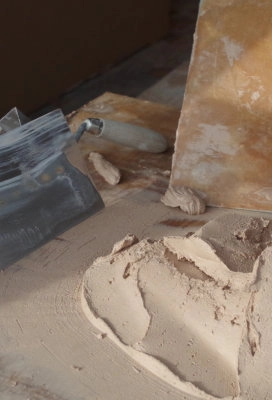


Skim Finishes
 Modern Plasters come in many varieties, but the most commonly used in this country is British Gypsum’s Thistle Multi Finish.
It's a powdery material added with clean water, then whisked and applied to both modern walls and plasterboard.
Modern Plasters come in many varieties, but the most commonly used in this country is British Gypsum’s Thistle Multi Finish.
It's a powdery material added with clean water, then whisked and applied to both modern walls and plasterboard.
British Gypsum does not advise plastering over older lath and plaster lime walls. For this, it is best to remove the old wall or ceiling and/or fit plasterboard using either wooden batons or British Gypsum’s Gyplyner.
Plasterboard
Dry lining your walls or ceiling with plasterboard is generally a safe bet. It’s easy to dismantle later in life without making much mess, and it's easy to plaster, paint, or wallpaper over. With the right fixings, it can support a fair amount of weight. You can even use tiles or traditional plasters on plasterboard.
Undercoats
If the area, you require plastered, does not use traditional lime mortar or clay bricks and you need, the wall to be levelled beyond 3mm, undercoat plasters such as Thistle Bonding or Thistle Hardwall can be used in layers of up to 11mm. Alternatively fully cured Portland Cement could be used.
Coving
The best modern coving to use is either paper backed plaster or polystyrene coving. Popular shapes are 'C' and 'S' coving. These can generally be fitted by one person and are durable and easy to paint.
Over Artex
Artex has quickly gone out of fashion for many reasons. It is possible to use a Thistle plaster over an old Artex surface, yet Artex comes in many different varieties—some types even contain Asbestos.
Plaster based artex, can contain Asbestos, dries hard and brittle and often applied thicker than its modern counterpart, Polymer based artex that has a slight plastic or rubbery texture when dry.
Once tested for asbestos, the stipples on plaster based artex can be scrapped off, then an undercoat plaster applied, completed with a finish plaster.
Polymer based artex should really be removed with a steamer, before being plastered, as it would otherwise create a plastic film between the finish plaster and the material above, this artex film, could peel away from the original substrate.


